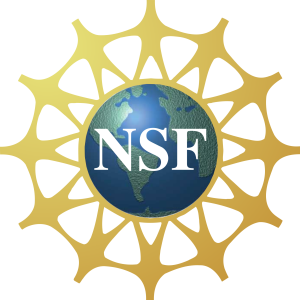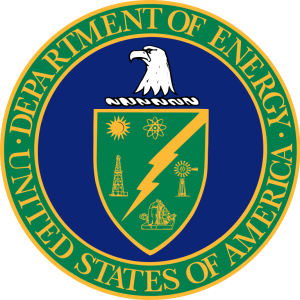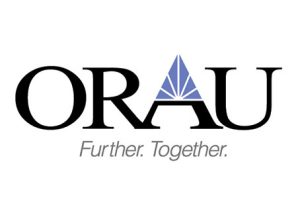Research Thrusts:
We aim to gain a fundamental understanding and push the boundary of thermal energy transport, conversion, and storage to extremes. To realize this target, we develop novel, accurate, and multiscale simulation models and methods based on first principles, molecular dynamics, finite element analysis, and machine learning. Combined with materials syntheses as well as microstructures and thermal properties characterizations, we are able to validate the models and guide the designs for various applications. Research areas include:
- Ultrahigh-temperature materials and thermal transport: thermal barrier coatings, thermal protection, high-temperature energy harvesting, heat transfer in Earth mantle
- Thermal management of semiconductors: heat and charge transport with impurities and defects, interfacial thermal transport, thermal interface materials, ultra-high thermal conductivity materials
- Building energy efficiency: thermal insulation materials, building envelope air leakage detection, thermal energy storage, passive cooling, ultra-low thermal conductivity materials
- Thermal transport with irradiation: thermal properties of materials after radiation
- Thermal radiative properties: emissivity of materials, photon transport inside materials
- Ionic transport: lithium-ion materials, quantum materials, 2D materials
Methods:
Theoretical:
- Machine learning/artificial intelligence
- Density functional theory (DFT) packages: (phase stability, phase transition/ transformation, mechanical/ electrical/ thermodynamical/ thermal/ thermoelectical properties, atomic vibration, ion migration, ab-initio molecular dynamics (AIMD)) -- VASP, Abinit, ELK, Quantum Espresso
- Classical molecular dynamics (MD) simulations, e.g., LAMMPS
- Tight-binding molecular dynamics (TBMD) -- DFTB
- Harmonic lattice dynamics (LD) calculations, e.g., (our own code, GULP, Phonopy)
- Phonon normal mode analysis (NMA), i.e., spectral energy density (SED) analysis (our own code & my tool)
- First principles calculations of three- and four-phonon scattering rates (our own developed method & code, Thirdorder, ShengBTE)
- Spectral phonon temperature (SPT) method (our own developed method & code)
- Exact solution to linearized Boltzmann transport equation (BTE) including three- and four-phonon scattering (our own developed method & code)
- Finite difference and finite volume methods (FDM, FVM) in heat, mass, and momentum transfer (our own code)
- Gray BTE -- FVM solver
Experimental:
- Speed Mixer
- Laser Flash Thermal Conductivity measurement (0-1600 C)
- Electron microscopy (TEM, SEM, STEM)
- Fourier-transform infrared spectroscopy (FTIR)
- Spark plasma sintering (SPS)
Materials:
- Ultra-high thermal conductivity materials
- Diamond, BAs, c-SiC, BP, c-BN, BeO, theta-TaN, etc.
- Semiconductors
- C, Si, Ge, SiC, BN, BP, BAs, AlN, AlP, AlAs, AlSb, GaN, GaP, GaAs, Ga2O3, Al2O3, CdTe, etc. impurity, defects, alloy, nanostructures (nanowires, nanomeshes, superlattices, etc.)
- Ultra-high temperature materials, complex oxides, thin films, surfaces, heterostructures
- HfB2, ZrB2, HfC, ZrC, HfN, ZrN, A2B2O7 (La2Zr2O7), XO2 (ZrO2, UO2), LaCoO3, LaxSr1-xCoO3-d, SrTiO3, LaxSr1-xMnO3, RuO2, CrO2, PdO2, ReO2, RhO2, OSO2, IrO2, etc.
- Thermoelectric materials & nanostructures
- SnSe, GeTe, SnS, PbS, PbTe, Bi2Te3, Sb2Te3, Bi2Se3, Bi2S3, PbTe-Bi2Te3, PbTe-Bi2-xSbxTe3, Bi2Te3-xSex, Bi13S18I2 heterostructures & nanocomposites
- Cage-structure materials: skutterudites, clathrates
- Emerging 1D/2D layered materials
- III, IV, V groups: Graphene, boron nitride, carbon nanotube (CNT), black phosphorus, phosphorene, silicene, germanene, borophene, etc.
- Transition-metal chalcogenide (MoS2, MoSe2, VS2, VSe2, WS2, WSe2, PdSe2, ZrTe5, etc.)
- Their nanostructures: graphene nanomesh & nanoribbon, graphene/substrate & sandwich, graphene/BN superlattice & heterostructure, etc.
- Lithium ion related
- Batteries: LiCoO2, LiFePO4, Li10GeP2S12, LiNiO2, MgV2O5, CaV2O5, LiNbO2, memristors
- Molecules, amorphous, organic materials
- polymers (polyethylene, polystyrene, polypropylene, EVOH, etc.), SiO2
1. Thermal transport and diffusion in ultra-high temperature ceramics and complex oxides:

- J. Tiwari, T. Feng, “Intrinsic thermal conductivity of ZrC from low to ultra-high temperatures: A critical revisit”, [Link]
- Y. Zhang, W. M. Postiglione, R. Xie, C. Zhang, H. Zhou, V. Chaturvedi, K. Heltemes, H. Zhou, T. Feng, C. Leighton, and X. Wang, Wide-range continuous tuning of the thermal conductivity of La0.5Sr0.5CoO3-d films via room-temperature ion-gel gating, Nat. Comm. 2023, accepted. [Link]
- X. Yang, J. Tiwari, T. Feng*, Reduced anharmonic phonon scattering cross-section slows the decrease of thermal conductivity with temperature, Materials Today Physics 24, 100689 (2022). [Link] [PDF] [SI]
- Q. Guo, T. Feng, M.J. Lance, K.A. Unocic, S.T. Pantelides, E. Lara-Curzio*, “Evolution of the structure and chemical composition of the interface between multi-component silicate glasses and yttria-stabilized zirconia after 40,000-hour exposure in air at 800°C”, J. Eur. Ceram. Soc. 42, 1576 (2022) [Link] [PDF]
- A. Kundu, X. Yang, J. Ma, T. Feng, J. Carrete, X. Ruan, G. K. H. Madsen, and W. Li, “Ultrahigh Thermal Conductivity of θ-Phase Tantalum Nitride”, Phys. Rev. Lett. 126, 115901 (2021). [Link] [PDF_w_SI]
- Y. Luo, X. Yang, T. Feng, J. Wang, X. Ruan*, “Vibrational hierarchy leads to dual-phonon transport in low thermal conductivity crystals”, Nat. Commun. 11, 2554 (2020). [Link] [PDF]
- X. Wu, J. Walter, T. Feng, J. Zhu, H. Zheng, J. F. Mitchell, N. Biškup, M. Varela, X. Ruan, C. Leighton, X. Wang*, “Glass-Like Through-Plane Thermal Conductivity Induced by Oxygen Vacancies in Nanoscale Epitaxial La0.5Sr0.5CoO3−δ“, Adv. Funct. Mater. 27, 1704233 (2017). [Link] [PDF+SI] (Selected as the front cover of Advanced Functional Materials, Vol 27, Iss 47, 2017.)
2. Thermal and electrical transport in semiconductors:
![]()

- H. Zhou, T. Feng, Theoretical upper limits of the thermal conductivity of Si3N4, Appl. Phys. Lett., in review.
- Z. Cheng, J. Liang, K. Kawamura, H. Zhou, H. Asamura, H. Uratani, J. Tiwari, S. Graham, Y. Ohno, Y. Nagai, T. Feng, N. Shigekawa*, D. G. Cahill*, High Thermal Conductivity in Wafer-Scale Cubic Silicon Carbide Crystals, Nat. Comm. 13, 7201 (2022). [Link] [PDF_w_SI]
- P. R. Chowdhury, T. Feng, Xiulin Ruan*, “Development of interatomic potentials for the complex binary compound Sb2Te3 and the prediction of thermal conductivity”, Phys. Rev. B 99, 155202 (2019). [Link] [PDF]
- Z. Cheng, J. Liang, K. Kawamura, H. Zhou, H. Asamura, H. Uratani, J. Tiwari, S. Graham, Y. Ohno, Y. Nagai, T. Feng, N. Shigekawa*, D. G. Cahill*, High Thermal Conductivity in Wafer-Scale Cubic Silicon Carbide Crystals, Nat. Comm. 13, 7201 (2022). [Link] [PDF_w_SI]
- X. Yang, T. Feng, J. Li, X. Ruan*, “Stronger role of four-phonon scattering than three-phonon scattering in thermal conductivity of III-V semiconductors at room temperature”, Phys. Rev. B 100, 245203, (2019). [Link] [PDF]
- X. Yang#, T. Feng#, J. S. Kang, Y. Hu, J. Li, X. Ruan*, Observation of strong higher-order lattice anharmonicity in Raman and infrared response, Phys. Rev. B 101, 161202(R) (2020). [Link] [PDF_w_SI] (# these authors contributed equally)
- T. Feng*, X. Yang, X. Ruan*, “Phonon anharmonic frequency shift induced by four-phonon scattering calculated from first principles”, J. Appl. Phys. 124, 145101 (2018). [Link] [PDF]
- T. Feng, L. Lindsay, X. Ruan*, “Four-phonon scattering significantly reduces intrinsic thermal conductivity of solids”, Phys. Rev. B: Rapid Commun. 96 (16), 161201 (2017). [Link] [PDF+SI] (Highlighted by several academic news, Intensively cited by three Science papers: see our News)
- T. Feng, B. Qiu, X. Ruan*, “Anharmonicity and necessity of phonon eigenvectors in the phonon normal mode analysis”, J. Appl. Phys. 117, 195102 (2015). [Link] [PDF]
- T. Feng, X. Ruan*, “Quantum mechanical prediction of four-phonon scattering rates and reduced thermal conductivity of solids”, Phys. Rev. B 93, 045202 (2016). [Link] [PDF]
- T. Feng, B. Qiu, X. Ruan*, “Coupling between phonon-phonon and phonon-impurity scattering: A critical revisit of the spectral Matthiessen’s rule”, Phys. Rev. B 92, 235206 (2015). [Link] [PDF]
- T. Feng, X. Ruan*, “Prediction of spectral phonon mean free path and thermal conductivity with applications to thermoelectrics and thermal management: a review”, J. Nanomater. 2014, 206370 (2014). [Link] [PDF]
3. Thermal transport across interfaces:

- R. Xie, J. Tiwari, T. Feng*, Impacts of various interfacial nanostructures on spectral phonon thermal boundary conductance, J. Appl. Phys. 132, 115108 (2022). [Link] [PDF]
- P. R. Chowdhury, J. Shi, T. Feng, X. Ruan, “Prediction of Bi2Te3/Sb2Te3 interfacial conductance and superlattice thermal conductivity using molecular dynamics simulations”, ACS Appl. Mater. & Interfaces, 10.1021/acsami.0c17851 (2021). [Link] [PDF]
- P. R. Chowdhury, C. Reynolds, A. Garrett, T. Feng, S. P. Adiga,* X. Ruan,* Machine learning maximized Anderson localization of phonons in aperiodic superlattices, Nano Energy 69, 104428 (2020). [Link] [PDF]
- T. Feng, Y. Zhong, J. Shi, X. Ruan*, “Unexpected high inelastic phonon transport across solid-solid interface: Modal nonequilibrium molecular dynamics simulations and Landauer analysis”, Phys. Rev. B, 99, 045301 (2019). [Link] [PDF]
- Z. Cheng, T. Bai, J. Shi, T. Feng, Y. Wang, C. Li, K. D. Hobart*, T. I. Feygelson, M. J. Tadjer, B. B. Pate, B. M. Foley, L. Yates, S. Pantelides, B. A. Cola, M. Goorsky, S. Graham*, “Tunable Thermal Energy Transport across Diamond Membranes and Diamond-Si Interfaces by Nanoscale Graphoepitaxy”, ACS Appl. Mater. & Interfaces, 11, 20, 18517-18527 (2019). [Link] [PDF+SI]
- T. Feng, W. Yao, Z. Wang, J. Shi, C. Li, B. Cao, and X. Ruan*, “Spectral analysis of nonequilibrium molecular dynamics: spectral phonon temperature and local nonequilibrium in thin films and across interfaces”, Phys. Rev. B 95, 195202 (2017). [Link] [PDF]
11/2024. New Review Paper published!
“(Ultra)wide bandgap semiconductor heterostructures for electronics cooling”, Appl. Phys. Rev., 11, 041324 (2024). [Link] [PDF]

This comprehensive 44-page review summarized the cutting-edge advancements in wide and ultrawide bandgap semiconductor growth and integration, specifically for electronics cooling. It covers:
1️⃣ Growth of GaN, Ga2O3, AlN, SiC, digital alloys, and superlattices
2️⃣ Heterogeneous integration and bonding techniques
3️⃣ Thermal characterization, enhancement methods, and fundamental understanding
4️⃣ Device-level simulations and experimental demonstrations
5️⃣ Key challenges and future perspectives
We hope this review serves as a valuable resource for researchers and engineers working at the intersection of semiconductors and thermal management. Check it out!
4. Thermal radiative properties of materials:
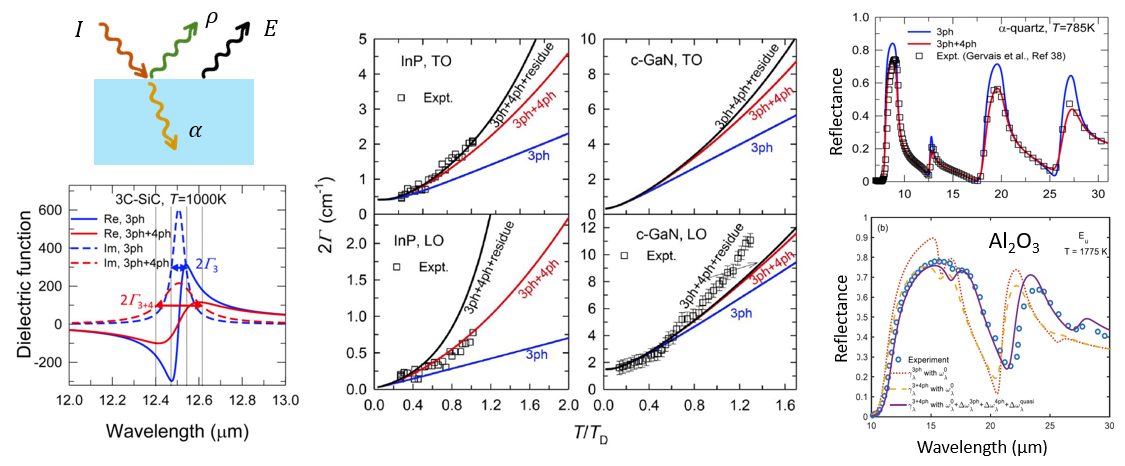
- X. Yang, T. Feng, J. Li, X. Ruan*, Evidence of fifth- and higher-order phonon scattering entropy of zone-center optical phonons, Phys. Rev. B 105, 115205 (2022). [Link] [PDF_w_SI]
- Z. Han, X. Yang, S. E. Sullivan, T. Feng, L. Shi, W. Li, X. Ruan, “Raman linewidth contributions from four-phonon and electron-phonon interactions in graphene”, Phys. Rev. Lett. 128, 045901 (2022). [Link] [PDF_w_SI]
- X. Yang#, T. Feng#, J. S. Kang, Y. Hu, J. Li, X. Ruan*, Observation of strong higher-order lattice anharmonicity in Raman and infrared response, Phys. Rev. B 101, 161202(R) (2020). [Link] [PDF_w_SI] (# these authors contributed equally) (Selected as the Editors’ Suggestions of Physical Review B: Reported by news media. See our News)
- Z. Tong, X. Yang, T. Feng, H. Bao, X. Ruan*, First-principles predictions of temperature-dependent infrared dielectric function of polar materials by including four-phonon scattering and phonon frequency shift, Phys. Rev. B 101, 125416 (2020). [Link] [PDF]
- T. Feng*, X. Yang, X. Ruan*, “Phonon anharmonic frequency shift induced by four-phonon scattering calculated from first principles”, J. Appl. Phys. 124, 145101 (2018). [Link] [PDF]
5. Building Energy Efficiency: Porous thermal insulation materials

- Z. Shen, S Shrestha, D. Howard, T. Feng, D. Hun, B. She, Machine learning–assisted prediction of heat fluxes through thermally anisotropic building envelopes, Building and Environment, 234, 110157 (2023). [Link] [PDF]
- S. S. Shrestha, J. Tiwari, A. Rai, D. E. Hun, D. Howard, A. O. Desjarlais, M. Francoeur, T. Feng*, Solid and Gas Thermal Conductivity Models Improvement and Validation in Various Porous Insulation Materials, Int. J. Therm. Sci. 187, 108164, (2023). [Link] [PDF]
- A. Rai, T. Feng, D. Howard, D. Hun, M. Zhang, H. Zhou, S. S. Shrestha, “Conduction Heat Transfer through Solid in Porous Materials: A Comparative Study by Finite-Element Simulations and Effective Medium Approximations”, Comput. Therm. Sci. 13, 19 (2021) [Link] [PDF].
- (Patent) Som S. Shrestha, Mikael Salonvaara, Emishaw D. Iffa, Niraj Kunwar, Diana Hun, Philip R. Boudreaux, and Tianli Feng, Non-Provisional Utility Patent Application – UTB Ref. No. ID202004771.US.01, Fox Ref. No. 157379.11801 (6321-547), “Solid-State Thermal Switch Panel For Thermal Storage”. (2023)
6. Building Energy Efficiency: air leakage detection
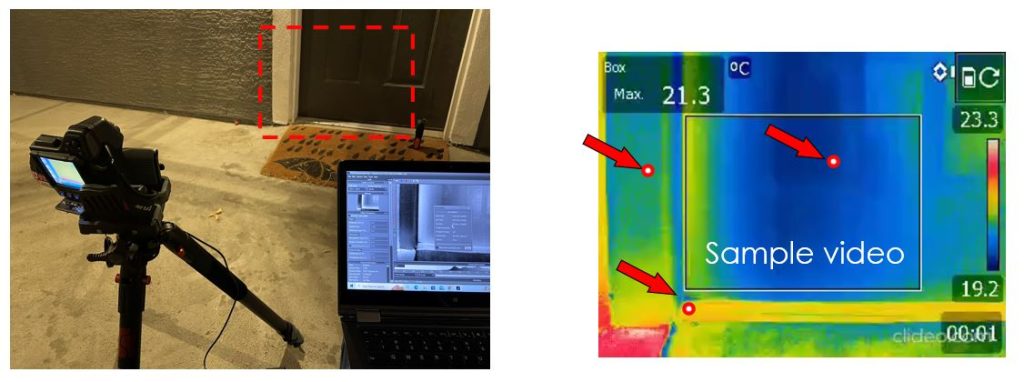
- T. Feng*, Z. Shen, S. Shrestha, D. Hun, “A novel transient infrared imaging method for non-intrusive, low-cost, fast, and accurate air leakage detection in building envelopes”, under review.
- (Patent) Tianli Feng, Zhenglai Shen, Som S Shrestha, Provisional patent application “Building Air Leakage Detection and Quantification Using Transient Infrared Imaging” 63 542 999 (2023).
7. Mold compound for electronics packaging

8. Hypersonic air-solid interaction modeling:
9. Structural, phonon, and electronic properties of 2D materials:

- Z. Han, X. Yang, S. E. Sullivan, T. Feng, L. Shi, W. Li, X. Ruan, “Raman linewidth contributions from four-phonon and electron-phonon interactions in graphene”, Phys. Rev. Lett. 128, 045901 (2022). [Link] [PDF_w_SI]
- Q.-Y. Li*, T. Feng, W. Okita, Y. Komori, H. Suzuki, T. Kato*, T. Kaneko, T. Ikuta, X. Ruan*, K. Takahashi, “Enhanced Thermoelectric Performance of As-Grown Suspended Graphene Nanoribbons”, ACS Nano 13, 8, 9182 (2019). [Link] [PDF]
- A. Oyedele#, S. Yang#, T. Feng#, A. V. Haglund, Y. Gu, A. A. Puretzky, D. Briggs, C. M. Rouleau, M. F. Chisholm, R. R. Unocic, D. Mandrus, H. M. Meyer, S. T. Pantelides, D. B. Geohegan, K. Xiao*, “Defect-mediated phase transformation in anisotropic 2D PdSe2 crystals for seamless electrical contacts”, J. Am. Chem. Soc., 141, 22, 8928-8936 (2019). [Link] [PDF+SI] (# these authors contributed equally)
- J. Idrobo*, A. Lupini*, T. Feng, R. Unocic, F. Walden, D. Gardiner, T. Lovejoy, N. Dellby, S. Pantelides, O. Krivanek, “Temperature Measurement by a Nanoscale Electron Probe using Energy Gain and Loss Spectroscopy”, Phys. Rev. Lett. 120, 095901 (2018). [Link] [PDF+SI] (Highlighted by several academic news: See our News)
- T. Feng, X. Ruan*, “Four-phonon scattering reduces intrinsic thermal conductivity of graphene and the contributions from flexural phonons”, Phys. Rev. B 97, 045202 (2018). [Link] [PDF]
- T. Feng, X. Ruan*, “Ultra-low thermal conductivity in graphene nanomesh”, Carbon 101, 107-113 (2016). [Link] [PDF]
- T. Feng, X. Ruan*, Z. Ye, B. Cao*, “Spectral phonon mean free path and thermal conductivity accumulation in defected graphene: The effects of defect type and concentration”, Phys. Rev. B 91, 224301 (2015). [Link] [PDF]
- Z. Ye, B. Cao*, W. Yao, T. Feng, X. Ruan*, “Spectral phonon thermal properties in graphene nanoribbons”, Carbon 93, 915-923 (2015). [Link] [PDF]
- Z. Wang, T. Feng, X. Ruan*, “Thermal conductivity and spectral phonon properties of freestanding and supported silicene”, J. Appl. Phys. 117, 084317 (2015). [Link] [PDF]
10. Amorphous materials, polymers:

- Y. Zhang, M. Eslamisaray, T. Feng, U. Kortshagen, X. Wang*, “Observation of Suppressed Diffuson and Propagon Thermal Conductivity of Hydrogenated Amorphous Silicon Films”, Nanoscale Advances 4, 87 (2022) [Link] [PDF]
- T. Feng*, A. Rai, D. Hun, S. S Shrestha*, “Molecular dynamics simulations of energy accommodation between gases and polymers for ultra-low thermal conductivity insulation”, Int. J. Heat Mass Tran. 164,120459 (2021). [Link] [PDF]
- T. Feng*, J. He, A. Rai, D. Hun, J. Liu, S. S Shrestha*, “Size effects in the thermal conductivity of amorphous polymers”, Phys. Rev. Applied 14, 044023 (2020). [Link] [PDF_w_SI]
- Z. Cheng, A. Weidenbach, T. Feng, M. B. Tellekamp, S. Howard, M. J. Wahila, B. Zivasatienraj, B. Foley, S. Pantelides, L. F.J. Piper, W. Doolittle, S. Graham*, “Diffuson-driven Ultralow Thermal Conductivity in Amorphous Nb2O5 Thin Films”, Phys. Rev. Materials 3, 025002 (2019). [Link] [PDF+SI]
11. Nanoscale phonon Boltzmann transport equation:
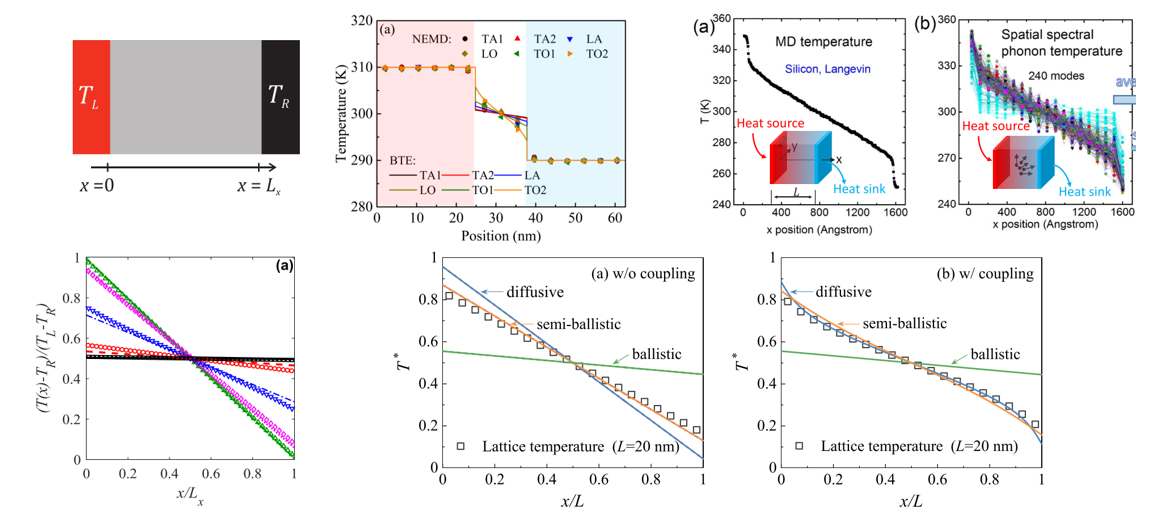
- J. Xu, Y. Hu, X. Ruan, X. Wang, T. Feng*, H. Bao*, “Nonequilibrium phonon transport induced by finite sizes: the effect of phonon-phonon coupling”, Phys. Rev. B, 104, 104310 (2021). [Link] [PDF]
- Y. Hu#, T. Feng#, X. Gu, Z. Fan, X. Wang, M. Lundstrom, S. S. Shrestha, H. Bao*, “Unification of nonequilibrium molecular dynamics and the mode-resolved phonon Boltzmann equation for thermal transport simulations”, Phys. Rev. B, 101, 155308 (2020). [Link] [PDF] (# these authors contributed equally)
- T. Feng, W. Yao, Z. Wang, J. Shi, C. Li, B. Cao, and X. Ruan*, “Spectral analysis of nonequilibrium molecular dynamics: spectral phonon temperature and local nonequilibrium in thin films and across interfaces”, Phys. Rev. B 95, 195202 (2017). [Link] [PDF]
- J. Kaiser*, T. Feng, J. Maassen, X. Wang, X. Ruan, M. Lundstrom, “Thermal Transport at the Nanoscale: A Fourier’s Law vs. Phonon Boltzmann Equation Study”, J. Appl. Phys. 121, 044302 (2017). [Link] [PDF] [SI]
12. DFT simulations of topological insulators, ferroelectrics, surfaces, electride, and catalysis:
- Q. Zheng#, T. Feng#, J. A. Hachtel,# R. Ishikawa, J. C. Idrobo, J. Yan, N. Shibata, Y. Ikuhara, B. C. Sales, S. T. Pantelides, M. Chi, “Direct Visualization of Anionic Electrons in an Electride Reveals Inhomogeneities”, Science Advances, Vol. 7, no. 15, eabe6819 [Link] [PDF_w_SI](#contributed equally)
- T. Feng*#, Y. Wang#, A. Herklotz, M. F. Chisholm, T. Z. Ward, P. C. Snijders*, and S. T. Pantelides*, “Determination of rutile transition metal oxide (110) surface terminations by scanning-tunneling-microscopy contrast reversal”, Phys. Rev. B 103, 035409 (2021). (# these authors contributed equally) [Link] [PDF_w_SI]
- Q. Wang, Z. Zhao, Z. Zhang, T. Feng, R. Zhong, H. Xu, S. T. Pantelides, M. Gu*, “Sub-3 nm Intermetallic ordered Pt3In Clusters for Oxygen Reduction Reaction”, Adv. Sci., 7, 1901279 (2020). [Link] [PDF]
- S. Neumayer, L. Tao, A. O’Hara, J. Brehm, M. Si, P.-Y. Liao, T. Feng, S. V Kalinin, D Y. Peide, S. T Pantelides, P. Maksymovych, N. Balke*, “Alignment of Polarization against an Electric Field in van der Waals Ferroelectrics”, Phys. Rev. Applied 13, 064063 (2020). [Link]
- A. Dziaugys , K. Kelley , J. A. Brehm, L. Tao, A. Puretzky, T. Feng, A. O’Hara, S. Neumayer , M. Chyasnavichyus , E. A. Eliseev, J. Banys, Y. Vysochanskii, F. Ye, B. Chakoumakos, M. A. McGuire, S. V. Kalinin, G. Panchapakesan, N. Balke, S. T. Pantelides, A. N. Morozovska, P. Maksymovych*, “Piezoelectric domain walls in van der Waals antiferroelectric CuInP2Se6”, Nat. Commun. 11, Article number: 3623 (2020). [Link] [PDF]
- T. Feng, X. Wu, X. Yang, P. Wang, L. Zhang, X. Du, X. Wang*, S. T. Pantelides*, “Thermal conductivity of HfTe5: a critical revisit”, Adv. Funct. Mater. 30, 1907286 (2020). [Link] [PDF]
- J. Zhu#, T. Feng#, S. Mills, P. Wang, X. Wu, L. Zhang, S. T. Pantelides, X. Du, X. Wang*, “Record-Low and Anisotropic Thermal Conductivity of Quasi-1D Bulk ZrTe5 Single Crystal”, ACS Appl. Mater. & Interfaces 10, 40740–40747 (2018). [Link] [PDF+SI] (# these authors contributed equally)
14. Thermoelectrics:
- X. Li, Y. Lou, K. Jin, L. Fu, P. Xu, Z. Shi, T. Feng, B. Xu, Realizing zT > 2 in environment-friendly monoclinic Cu2S – tetragonal Cu1.96S nano phase junctions, Angew. Chem. Int. Ed., 10.1002/anie.202212885, 2022. [Link][PDF_w_SI]
- W. Zhang, Y. Lou, H. Dong, F. Wu, J. Tiwari, Z. Shi, T. Feng, S. T. Pantelides, B. Xu*, Phase-engineered high-entropy metastable FCC Cu2−yAgy(InxSn1−x)Se2S nanomaterials with high thermoelectric performance, Chem. Sci. 13, 10461 (2022). [Link] [PDF_w_SI]
- K. Jin, J. Tiwari, T. Feng*, Y. Lou*, B. Xu*, Realizing high thermoelectric performance in eco-friendly Bi2S3 with nanopores and Cl-doping through shape-controlled nano precursors, Nano Energy 100, 107478, 2022. [Link] [PDF_w_SI]
- Z. Zhu, J. Tiwari, T. Feng, Z. Shi, Y. Lou*, B. Xu*, “High thermoelectric properties with low thermal conductivity due to the porous structure induced by the dendritic branching in n-type PbS”, Nano Research 15, 4739 (2022). [Link] [PDF_w_SI]
- M. Dargusch, X. Shi, X. Tran, T. Feng, F. Somidin, X. Tan, W. Liu, K. Jack, J. Venezuela, H. Maeno, T. Toriyama, S. Matsumura, S. T. Pantelides, Z. Chen*, “In-Situ Observation of the Continuous Phase Transition in Determining the High Thermoelectric Performance of Polycrystalline Sn0.98Se'”, J. Phys. Chem. Lett., 10, 6512-6517 (2019). [Link] [PDF]
- M. Jin*, X. Shi, T. Feng, W. Liu, H. Feng, S. T. Pantelides, J. Jiang, Y. Chen, Y. Du, J. Zou*, Z. Chen*, “Super Large Sn1-xSe Single Crystals with Excellent Thermoelectric Performance”, ACS Appl. Mater. & Interfaces 11 (8), pp 8051–8059 (2019). [Link] [PDF+SI]
- M. Hong, Y. Wang, T. Feng, Q. Sun, S. Xu, S. Matsumura, S. T. Pantelides, J. Zou*, Z. Chen*, “Strong Phonon-Phonon Interactions Securing Extraordinary Thermoelectric Ge1-xSbxTe with Zn-Doping Induced Band Alignment”, J. Am. Chem. Soc. 141 (4), 1742–1748 (2019). [Link] [PDF+SI]
- X. Shi, A. Wu, T. Feng, K. Zheng, W. Liu, M. Hong, Q. Sun, S. T. Pantelides, Z. Chen*, J. Zou*, “High thermoelectric performance in p-type polycrystalline Cd-doped SnSe achieved by a combination of cation vacancies and localized lattice engineering”, Adv. Energy Mater. 9, 1803242 (2019). [Link] [PDF+SI]
- B. Xu#, T. Feng#, Z. Li, L. Zhou, S. T. Pantelides, Y. Wu*, “Creating Zipper-like van der Waals Gap Discontinuity in Low-Temperature-Processed Nanostructured PbBi2nTe1+3n for Enhanced Phonon Scattering and Improved Thermoelectric Performance”, Angew. Chem. Int. Ed. 57, 10938 (2018). [Link] [PDF+SI] (# these authors contributed equally)
- B. Xu*, T. Feng, Z. Li, W. Zhang, Y. Wu*, “Large-Scale, Solution-Synthesized Nanostructured Composites for Thermoelectric Applications”, Adv. Mater., 30, 1801904 (2018). [Link] [PDF]
- E. Shi#, T. Feng#, J. Bahk, Y. Pan, W. Zheng, Z. Li, G. J. Snyder, S. T. Pantelides, Y. Wu*, “Experimental and Theoretical Study on Well-Tunable Metal Oxide Doping Towards HighPerformance Thermoelectrics”, ES Energy & Environment 2, 43-49 (2018). [Link] [PDF+SI] (# these authors contributed equally) (Selected as the cover page of ES Energy & Environment Vol 2: See our News)
- B. Xu, T. Feng, Z. Li, S. Pantelides, Y. Wu*, “Constructing Highly Porous Thermoelectric Monoliths with High Performance and Improved Portability from Solution-Synthesized Shape-Controlled Nanocrystals”, Nano Lett. 18, 4034-4039 (2018). [Link] [PDF+SI]
- B. Xu#, T. Feng#, M. T. Agne, Q. Tan, Z. Li, K. Imasato, L. Zhou, J. Bahk, X. Ruan, G. J. Snyder, Y. Wu*, “Manipulating Band Structure through Reconstruction of Binary Metal Sulfide for High‐Performance Thermoelectrics in Solution‐Synthesized Nanostructured Bi13S18I2“, Angew. Chem. Int. Ed. 130, 2437–2442 (2018). [Link] [PDF+SI] (# these authors contributed equally) (Marked as Very Important Paper by Angewandte Chemie.)
- B. Xu, T. Feng, M. T Agne, L. Zhou, X. Ruan, G J. Snyder, Y. Wu*, “Highly Porous Thermoelectric Nanocomposites with Low Thermal Conductivity and High Figure of Merit from Large‐Scale Solution‐Synthesized Bi2Te2.5Se0.5 Hollow Nanostructures”, Angew. Chem. Int. Ed. 129, 3600-3605 (2017). [Link] [PDF+SI] (Marked as Very Important Paper by Angewandte Chemie. Highlighted by Nature Review Materials “Thermoelectric materials: The power of pores.)
- B. Xu, M. Agne, T. Feng, T. C. Chasapis, X. Ruan, Y. Zhou, H. Zheng, J. Bahk*, M. G.Kanatzidis, J. G. Snyder*, Y. Wu*, “Nanocomposites from Solution‐Synthesized PbTe‐BiSbTe Nanoheterostructure with Unity Figure of Merit at Low‐Medium Temperatures (500–600 K)”, Adv. Mater. 29, 1605140 (2017). [Link] [PDF+SI] (Selected as the inside front cover of Advanced Materials, Vol 29, Iss 10, 2017.)
- H. Fang, J. Bahk, T. Feng, Z. Cheng, A. Mohammed, X. Wang, X. Ruan, A. Shakouri, Y. Wu*, “Thermoelectric properties of solution synthesized n-type Bi2Te3 nanocomposites modulated by Se: An experimental and theoretical study”, Nano Research 9, 117-127 (2016). [Link] [PDF+SI]
- H. Fang, T. Feng, H. Yang, X. Ruan, and Y. Wu*, “Synthesis and thermoelectric properties of compositional-modulated lead telluride–bismuth telluride nanowire heterostructures”, Nano Lett. 13, 2058 (2013). [Link] [PDF]
Our achievements would not be possible without the funding support from:
